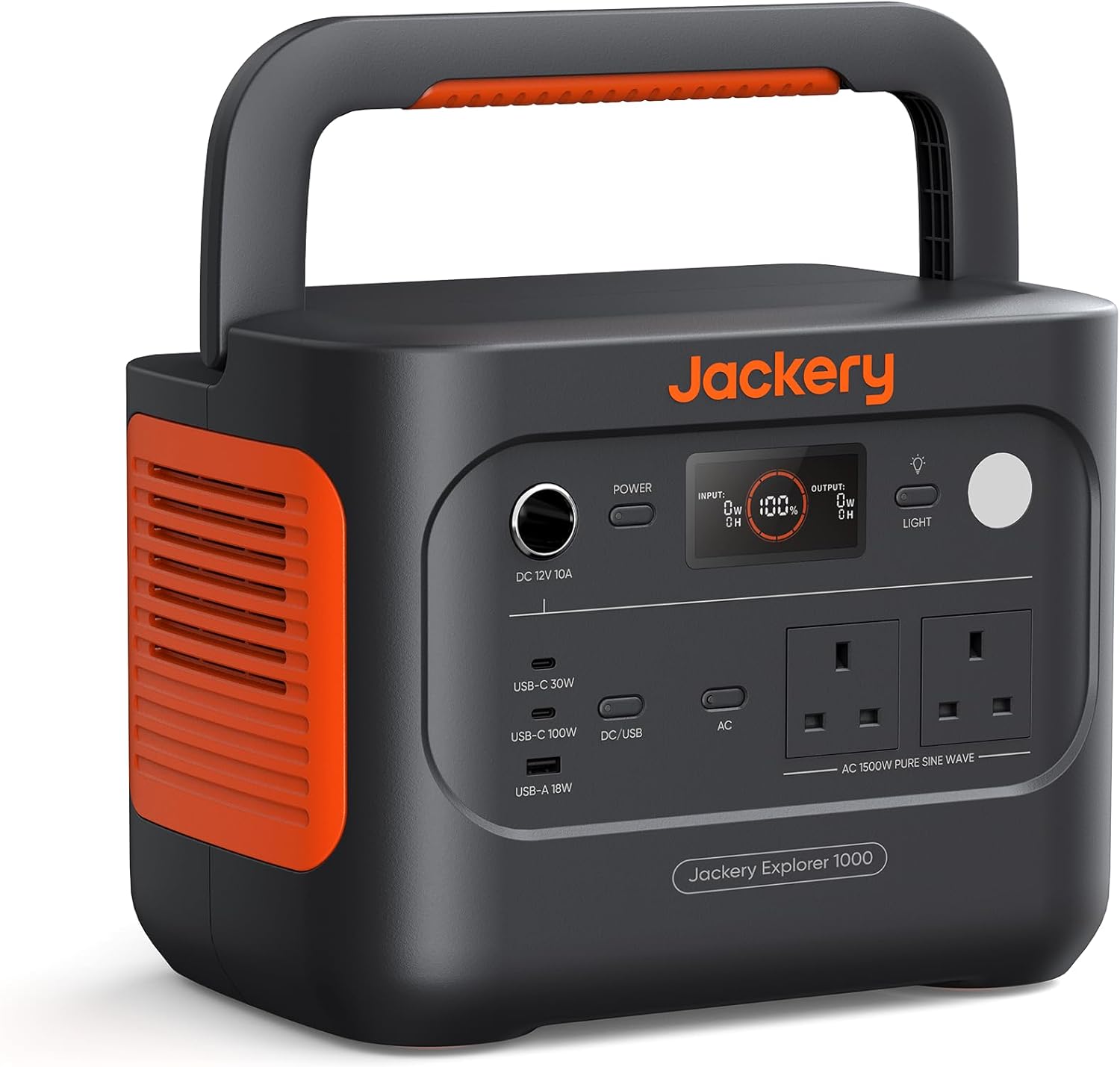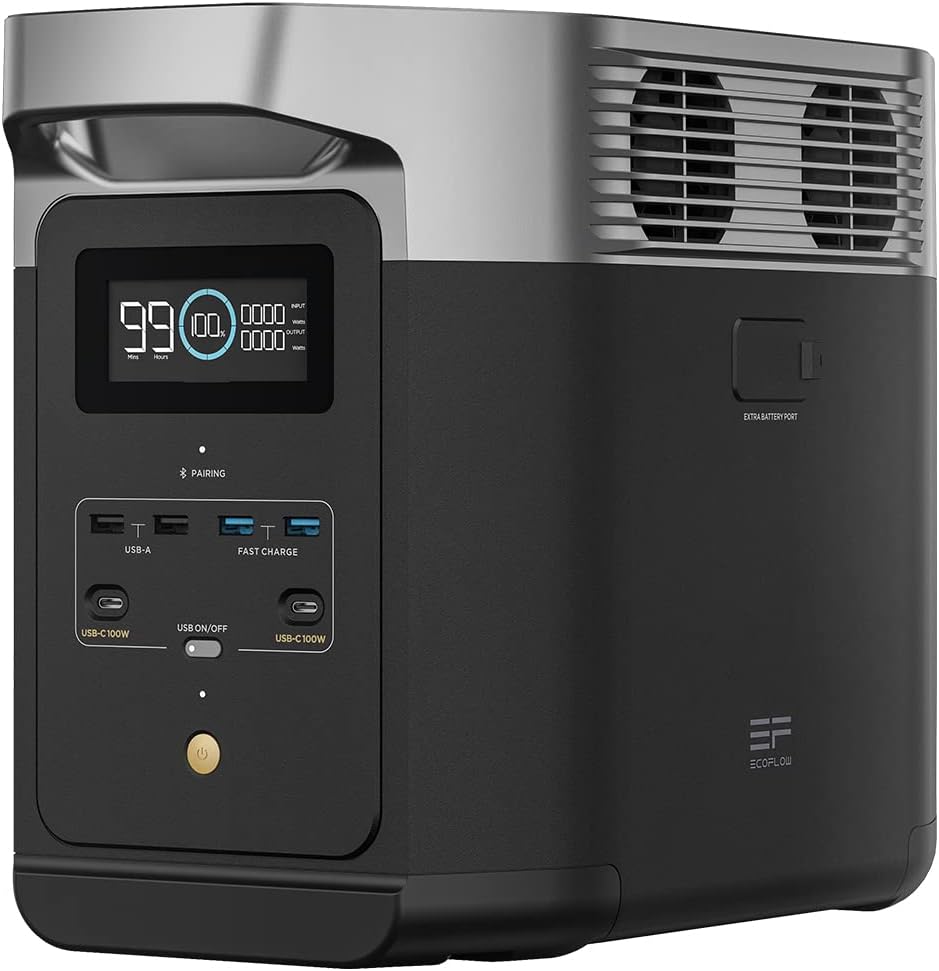Mastering Your Power Station: A Comprehensive Guide to User Manuals
Unlock the full potential of your power station with our guide to user manuals, ensuring safe and efficient use for camping, RV trips, or emergency backup.
Portable power stations have become indispensable tools for everything from camping and RV adventures to emergency home backup during blackouts and off-grid work. To truly unlock their potential and ensure safe, efficient operation, your user manual is your most valuable resource. Don’t let that thick booklet intimidate you! This guide will demystify power station manuals, showing you what to look for, where to find them, and offering handy advice for getting the most out of your device. We’ll use two popular models, the EcoFlow DELTA 2 and Jackery Explorer 1000 v2, as examples to illustrate key points, but the principles apply to virtually any portable power station.
Why Reading Your Power Station Manual Matters
In an age where many skip instruction booklets, your power station manual is an exception. It outlines crucial safety precautions (e.g., proper ventilation, avoiding moisture, correct charging practices) to prevent accidents, damage, or injury, ensuring peace of mind during blackouts or camping trips. It helps you discover features, ports, and modes like energy-saving options or app functionalities, optimizing your experience for RV or emergency use. The manual provides guidelines for extending lifespan through proper charging and storage, troubleshooting solutions for error codes, and ensures warranty compliance by detailing proper usage, making it a critical read.
Where to Find Your Power Station Manual
Even if you’ve misplaced the physical copy, user manuals are readily available online. The manufacturer’s official website is your primary source, typically under “Support,” “Downloads,” or “User Guides” sections, offering PDF versions. Some manuals are also on product pages or retailer websites, but prioritize the manufacturer’s site for the latest versions. Below is a table of manual sources for popular brands, including specific manuals for the EcoFlow DELTA 2 and Jackery Explorer 1000 v2:
| Brand/Product | Manual Source |
|---|---|
| EcoFlow | EcoFlow Manuals |
| EcoFlow DELTA 2 | EcoFlow DELTA 2 User Manual |
| Jackery | Jackery Manuals |
| Jackery Explorer 1000 v2 | Jackery Explorer 1000 v2 User Manual |
| BLUETTI | BLUETTI Manuals |
| ANKER SOLIX | ANKER Manuals |
| FOSSiBOT | FOSSiBOT Manuals |
| VTOMAN | VTOMAN Manuals |
Key Things to Look For in ANY Power Station Manual
Once you have the manual, focus on key sections. Safety instructions are critical, covering ventilation, moisture avoidance, and handling damaged cords. Technical specifications detail capacity (e.g., Jackery Explorer 1000 v2: 1070Wh; EcoFlow DELTA 2: 1024Wh, expandable), AC output (rated/surge), port types, and battery chemistry (often LiFePO4). Check cycle life, charging methods, and temperature ranges. Basic operations explain powering on/off and LCD indicators. Special features like EPS, energy-saving modes, X-Boost, and app connectivity are detailed, along with troubleshooting and warranty information, ensuring safe and efficient use.
Handy Advice for All Power Station Owners
- Initial Full Charge: Fully charge before first use to calibrate the battery management system.
- Optimal Storage: Store in a cool, dry, ventilated area away from sunlight.
- Regular Maintenance: Discharge and recharge every 3-6 months to maintain battery health.
- Know Your Loads: Check device wattage to avoid overloading.
- Solar Charging: Angle panels at the sun for maximum efficiency.
- App Benefits: Use the app for monitoring and advanced settings.
- Accessories: Use manufacturer-approved accessories to avoid warranty issues.
Common Mistakes to Avoid
Ignoring temperature limits can degrade battery health. Overloading the unit with appliances exceeding rated output triggers safety features or causes damage. Use only manufacturer-approved chargers and solar panels to avoid harm. Ensure ventilation fans are unobstructed to prevent overheating during heavy use or blackouts. Consistently draining to 0% can reduce lifespan; keep above 20% when possible. For long-term storage, maintain a partial charge (50-80%) as recommended to preserve battery health, especially for camping or blackout preparedness.
Top Picks for Portable Power: Jackery Explorer 1000 v2 & EcoFlow DELTA 2
When it comes to popular and highly-rated portable power stations in 2025, the Jackery Explorer 1000 v2 and EcoFlow DELTA 2 consistently stand out for their blend of performance, reliability, and user-friendly features. They are excellent examples of versatile power solutions for diverse needs, from camping trips to managing blackouts.
Jackery Explorer 1000 v2

A reliable power station for outdoor adventures, with robust capacity and user-friendly design.
Key Features:
- Capacity: 1070Wh.
- Output: 1500W (3000W surge).
- Battery: LiFePO4, 4000 cycles to 70% capacity.
- Portability: Lightweight and compact for camping.
- EPS Mode: Emergency power with fast switching.
Benefits:
- High capacity for essential gear.
- Intuitive interface for easy use.
- Long-lasting battery for extended trips.
- Quiet operation for indoor/outdoor use.
EcoFlow DELTA 2

A fast-charging, expandable power station for home backup and demanding off-grid scenarios.
Key Features:
- Capacity: 1024Wh, expandable with extra batteries.
- Output: 1800W (X-Boost for higher wattage).
- Battery: LiFePO4, long lifespan.
- Charging: 0-80% in 50 minutes via X-Stream.
- App Control: Advanced monitoring and settings.
Benefits:
- Rapid charging for quick recovery.
- Expandable capacity for long outages.
- Quiet and safe for indoor use.
- Versatile for RV and home backup.
Disclaimer: Always verify product specifications and reviews on Amazon before purchasing, as compatibility and performance may vary by device.
Choosing the Right Power Station (Beyond the Manual)
While this guide focuses on the manual, consider capacity (Wh) for your energy needs, output (W) for device compatibility, and portability for your use case (e.g., backpacking vs. home backup). Evaluate charging speed, battery type (LiFePO4 for longevity), and expandability for future needs. Features like app control, EPS, or specific outlets (e.g., RV plug) enhance usability for camping, RV trips, or blackouts.
Frequently Asked Questions about Portable Power Stations
How often should I fully charge and discharge my power station?
Most manufacturers recommend a full cycle every 3-6 months to calibrate the battery and ensure accurate charge display. Avoid daily 0% drains, but periodic cycles are beneficial.
Can I use my portable power station indoors?
Yes, they’re safe indoors with no fumes. Ensure ventilation during heavy use, as they generate heat. Follow the manual’s safety guidelines for optimal use.
What’s the difference between Watt-hours (Wh) and Watts (W)?
Watt-hours (Wh) measure total energy storage, indicating runtime. Watts (W) measure instantaneous power output, showing delivery capacity.
How do I know if my solar panels are compatible with my power station?
Check the manual’s solar input specs for voltage, current, and wattage. Use standard connectors like MC4 and ensure the panel’s output matches the station’s input range.
Can I leave my portable power station plugged in all the time?
Many with EPS can stay plugged in for backup. Check your manual; some advise against continuous charging, while others manage it safely.
The Future of Portable Power Stations (2025 Trends)
As of mid-2025, LiFePO4 batteries dominate for longevity and safety. Faster AC and solar charging, bi-directional EV charging, and smarter app integration are emerging. Modular designs allow expandable capacity, while higher outputs power entire homes or RVs. Improved portability with ergonomic designs enhances usability for camping, RV trips, and blackouts.
Your Power Station Mastery Begins Here
Your portable power station is a powerful and versatile device, designed to bring convenience and peace of mind wherever you need power, from remote camping sites and extended RV journeys to crucial home backup during unexpected blackouts. While the allure of immediate use is strong, taking the time to truly understand its user manual is an investment that pays dividends in safety, performance, and longevity. By familiarizing yourself with its specifications, features, and care instructions, you’ll not only avoid common pitfalls but also unlock the full potential of your portable power companion. For even deeper insights, be sure to explore our comprehensive PowerStationHQ Toolbox, where you’ll find guides, tools, a glossary, and more to better understand and master your power station. Don’t just own it, master it!
Need the Perfect Power Station?
Explore our range of reliable power stations, from compact models for daily use to high-capacity units for camping or emergencies, ensuring your devices stay powered.
Find More Power Station Solutions Here